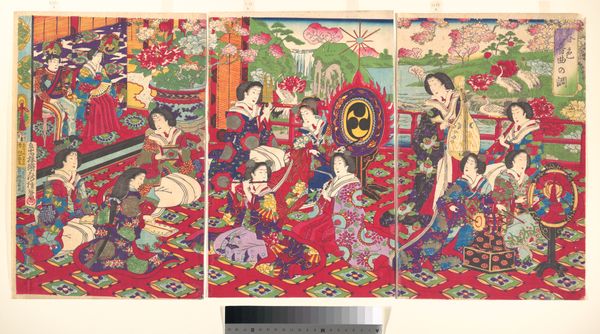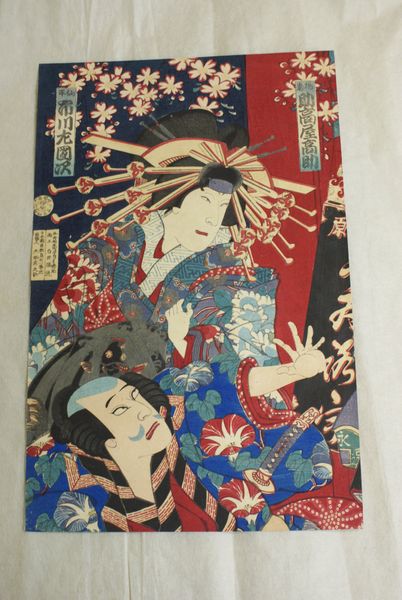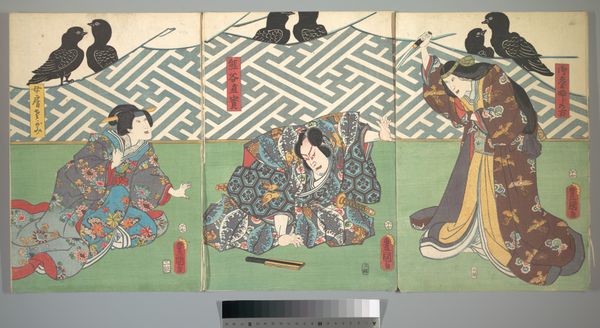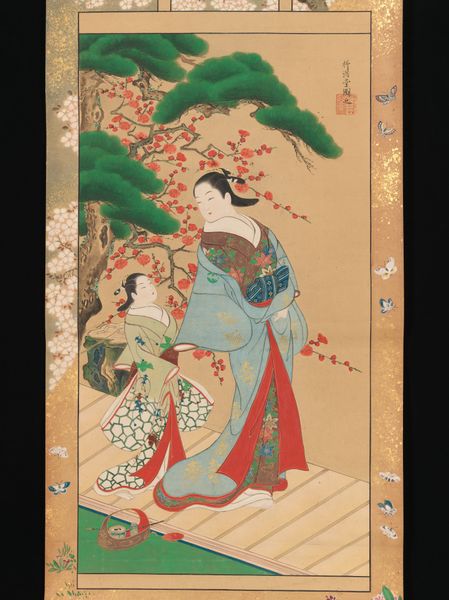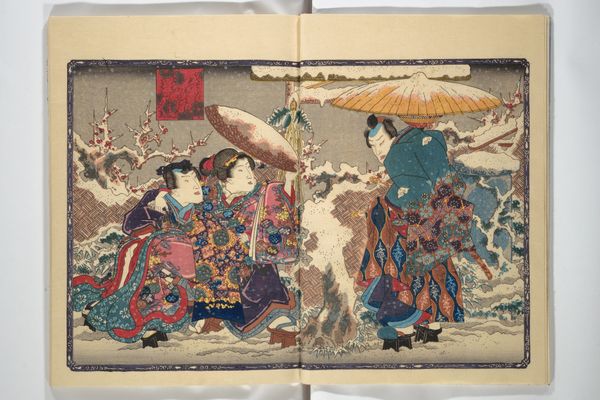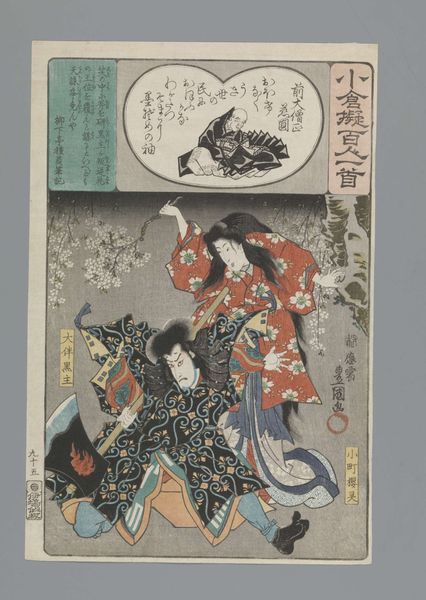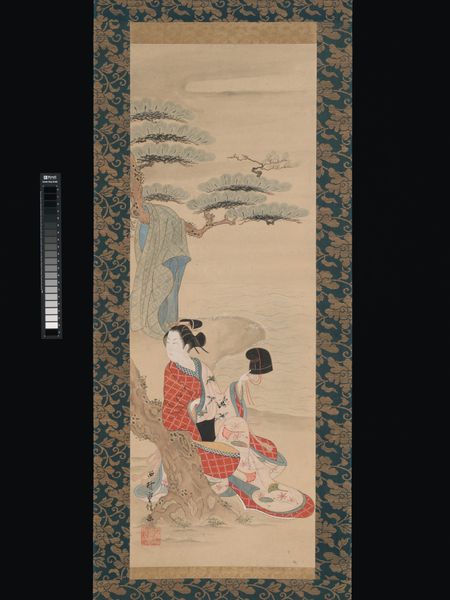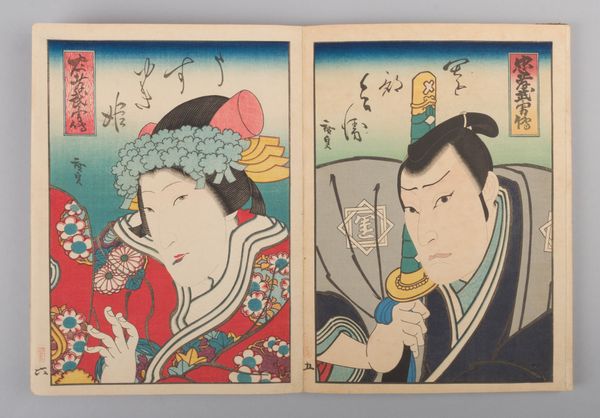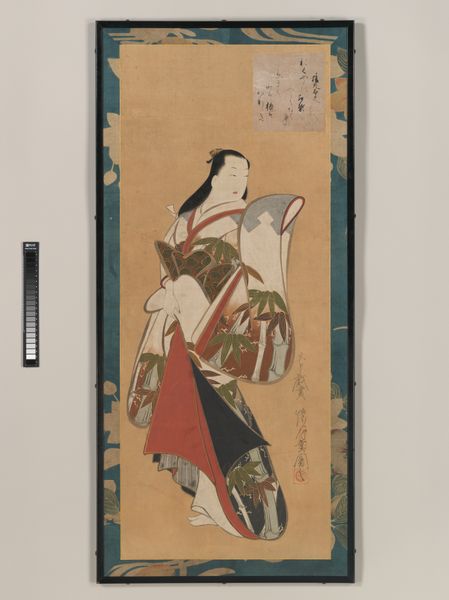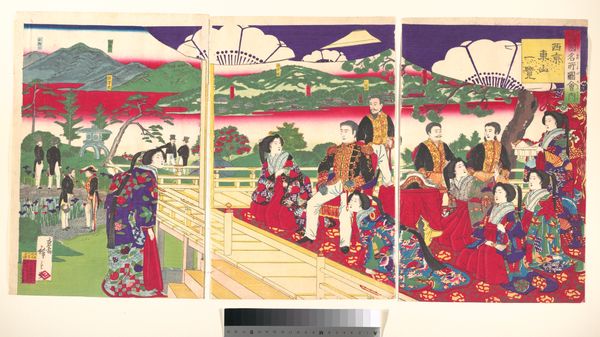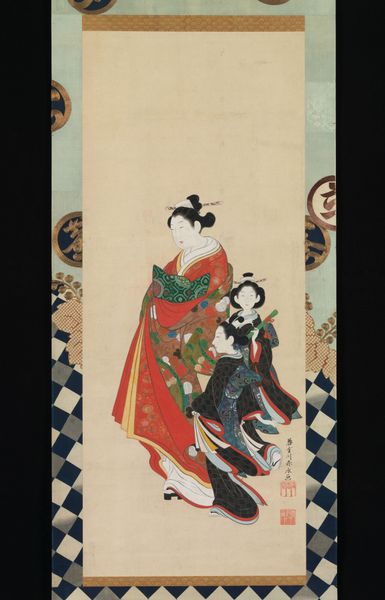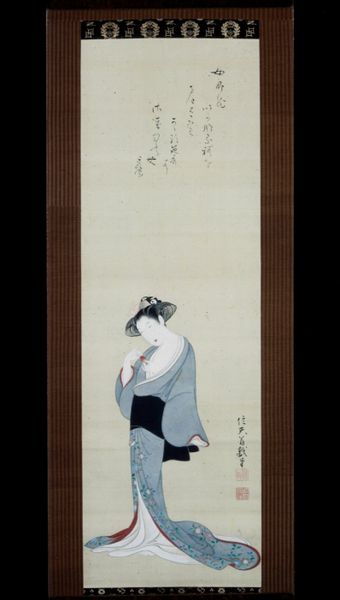
Onoe Kikugorō V as Otowake Neko no ke (Right), Bandō Mitsugorō IV as Aishō Michinoku (Center), Onoe Kikugorō V as Isogai Mibunosuke (Left) in the Kabuki play Tōkai Kidan Nekomata Yashiki 1870
0:00
0:00
Dimensions: 9 3/4 x 14 in. (24.8 x 35.6 cm)
Copyright: Public Domain
Editor: What a striking composition. There's an almost immediate sense of tension created by the arrangement of the three figures. Curator: Indeed. This triptych woodblock print, created around 1870 by Toyohara Kunichika, depicts actors in the Kabuki play Tōkai Kidan Nekomata Yashiki. Specifically, Onoe Kikugorō V appears twice, and Bandō Mitsugorō IV occupies the center. Editor: I'm curious about the materiality of woodblock prints from this era. The layering of colors, the registration of the blocks, it all speaks to a very deliberate and painstaking process. I'm struck by how this craft became such a widespread artistic medium. Curator: Precisely. The Ukiyo-e tradition elevates craftsmanship through standardized visual language, which in this image is the key for navigating the symbolism, from the exaggerated expressions to the costumes. Take the figure on the right with cat ears: it signifies transformation, while the central figure's gesture emphasizes performative drama. Editor: And it all begins with the work involved to produce them; the materials, tools, techniques involved... how these prints were so widely disseminated to become a consumer product speaks to Japan’s place within global economies and their cultural dissemination methods. You know? How far away it may be now from its original purpose? Curator: Without a doubt. This genre scene is not a snapshot but rather a highly structured commentary on social roles and archetypes, all playing out within these established symbolic orders and traditions of production and performance. The very stylized presentation of figures, set against the decorative backdrop, offers an engagement of signifiers. Editor: Even these signs end up in flea markets now, reduced to ephemera with little context. How much we, as observers, reduce something like this image into something with zero understanding or impact outside its decorative charm... That bothers me. Curator: An appropriate reflection, given its original popularity and mass reproduction! We each carry our context with us and into art's interpretation. Thanks to considering not just the symbolism, but its entire system of design. Editor: Likewise. Viewing art this way certainly keeps it in perspective, both aesthetically and politically.
Comments
No comments
Be the first to comment and join the conversation on the ultimate creative platform.
